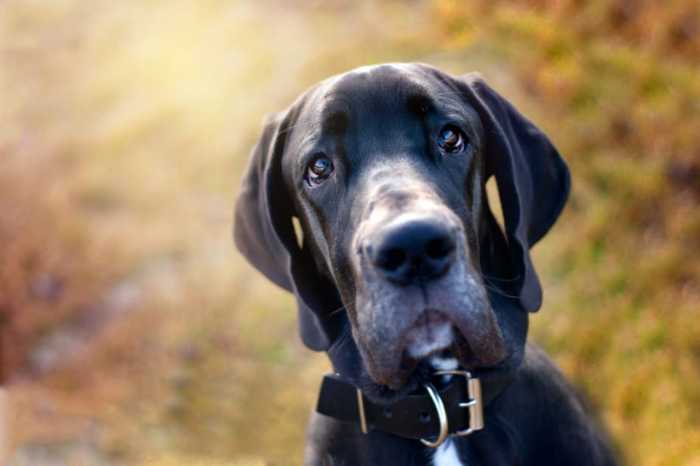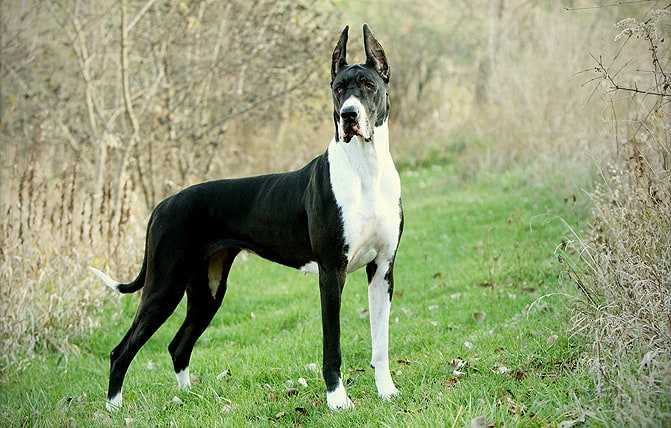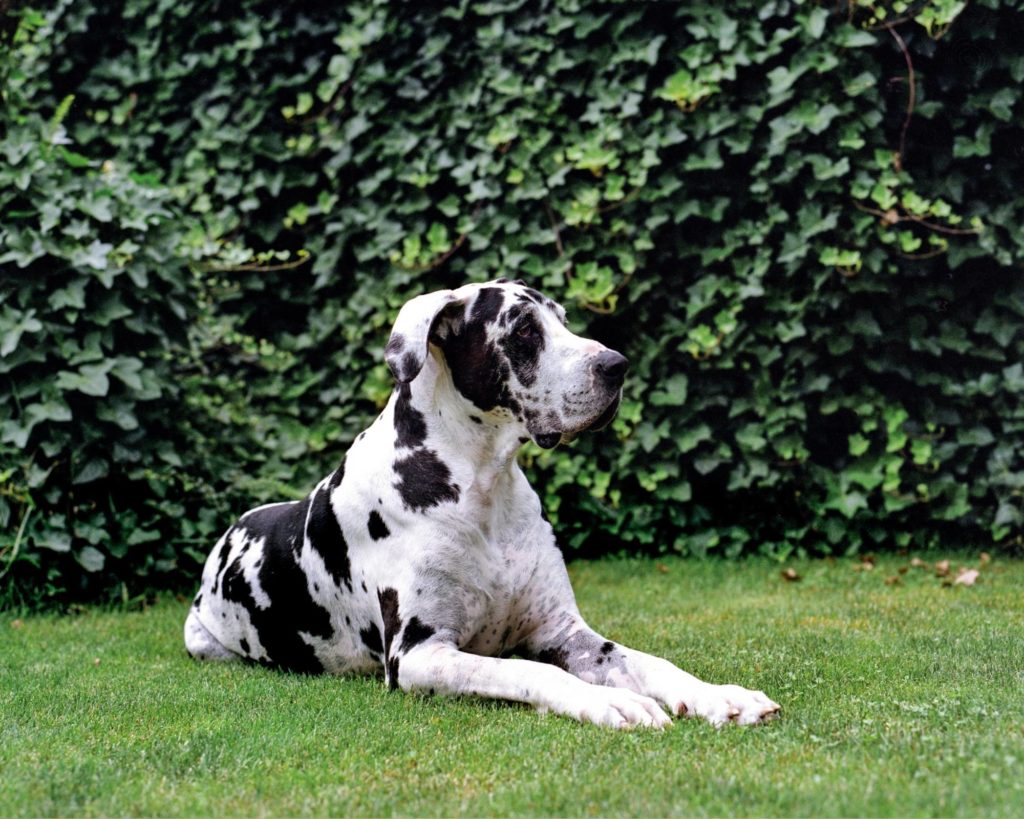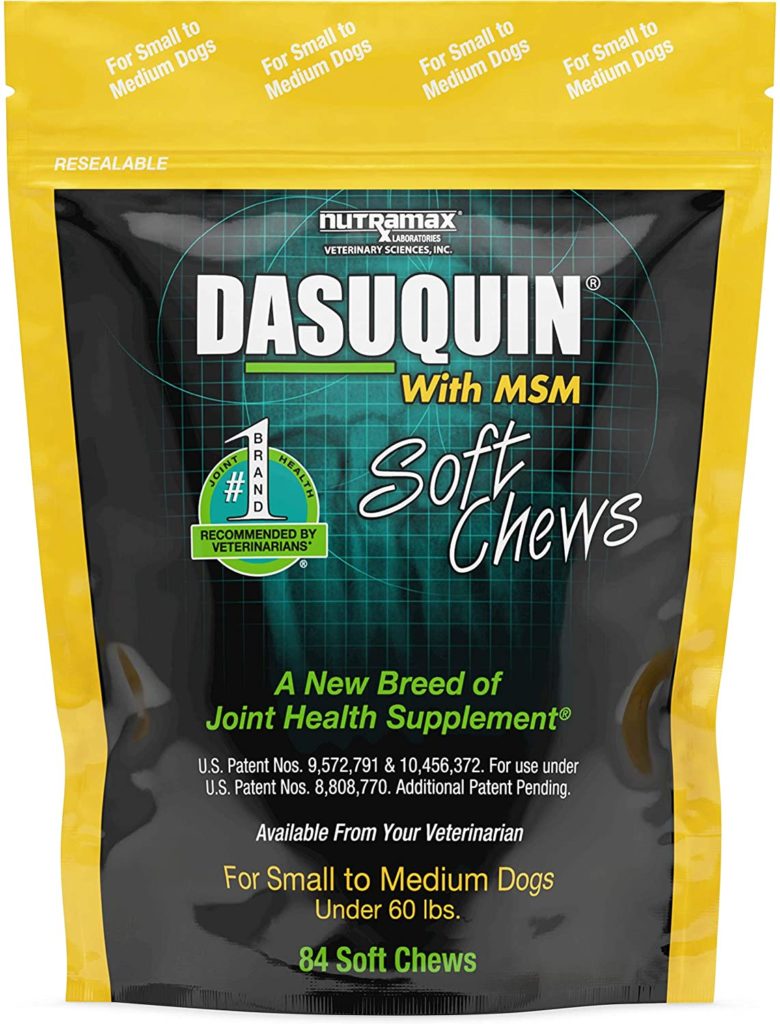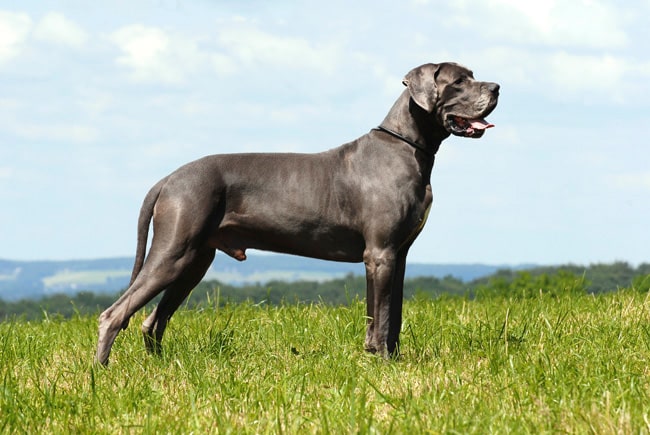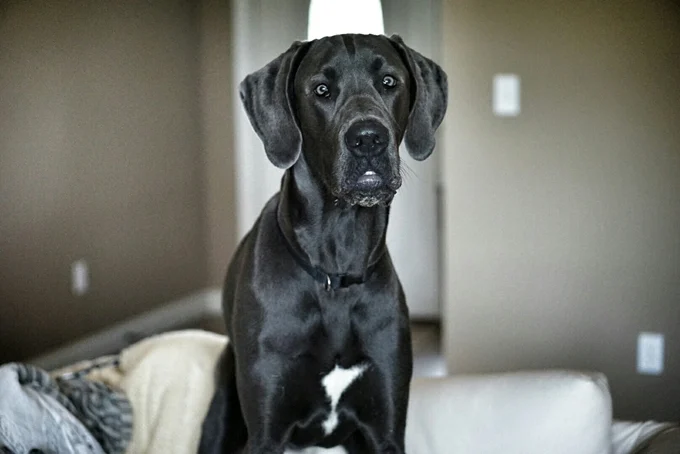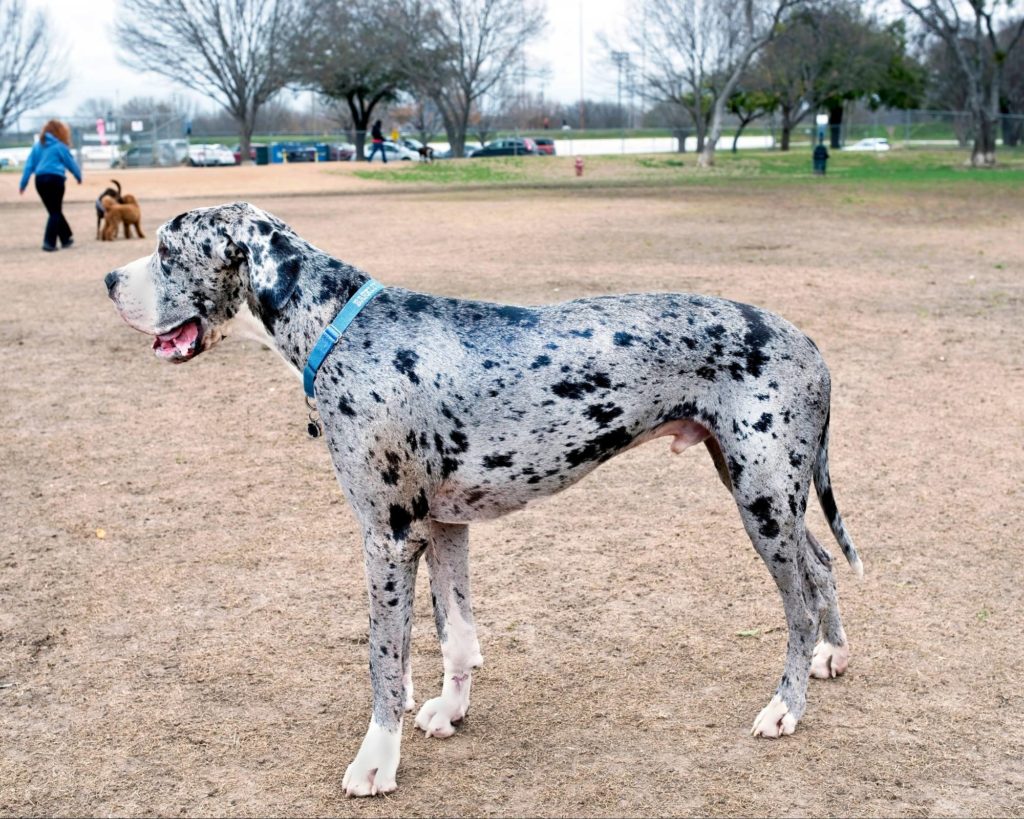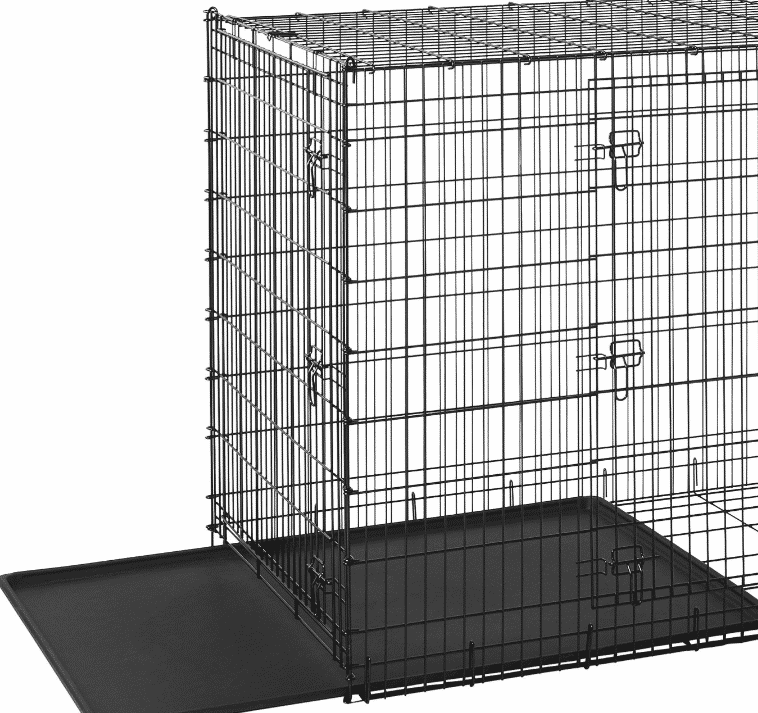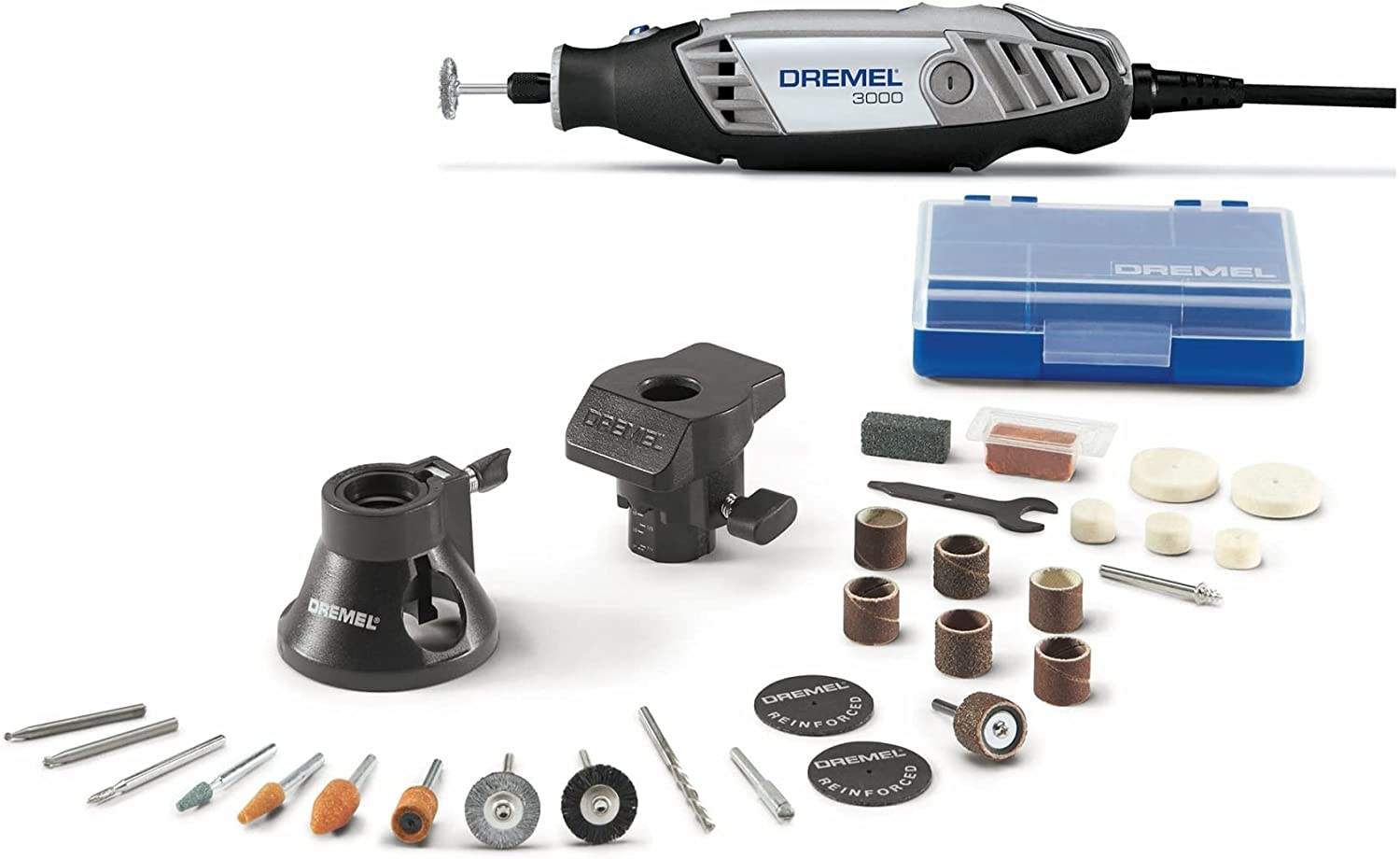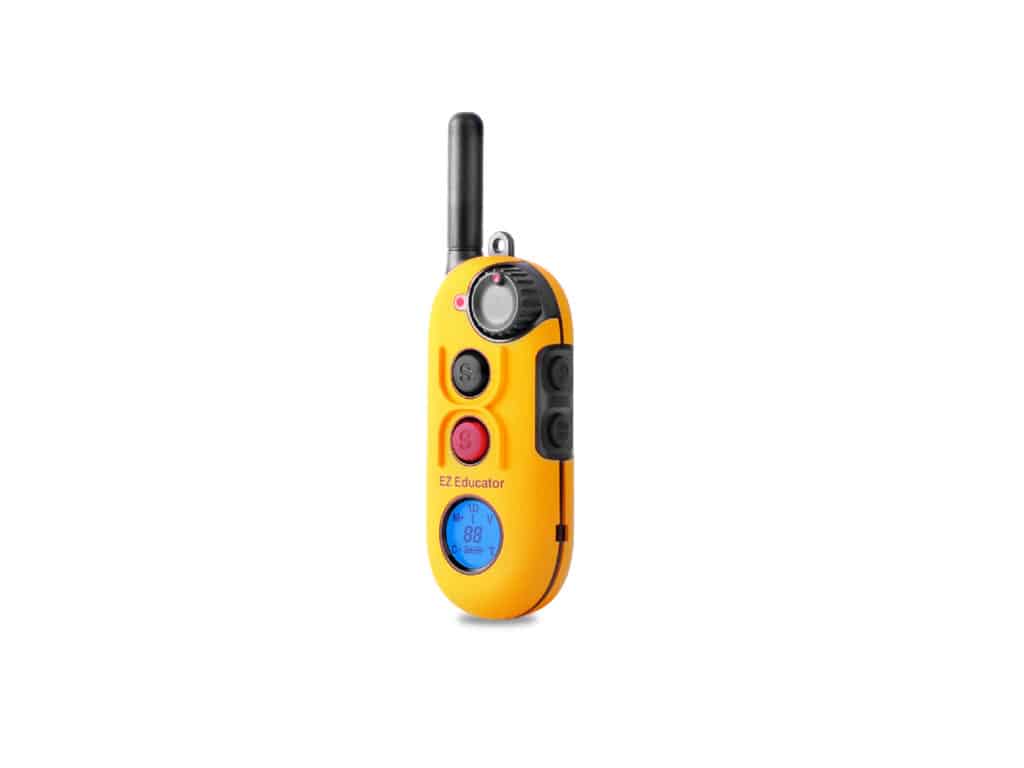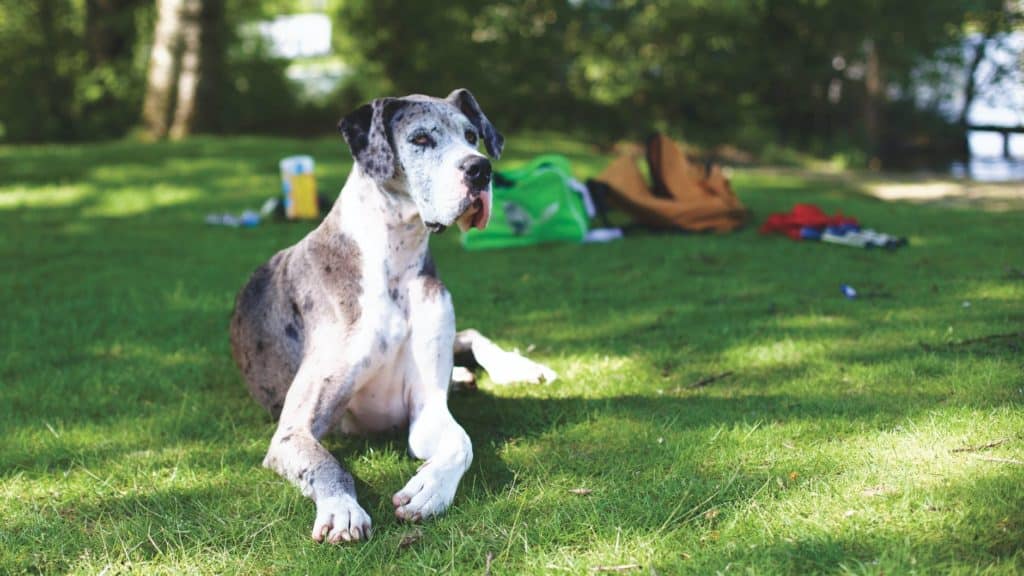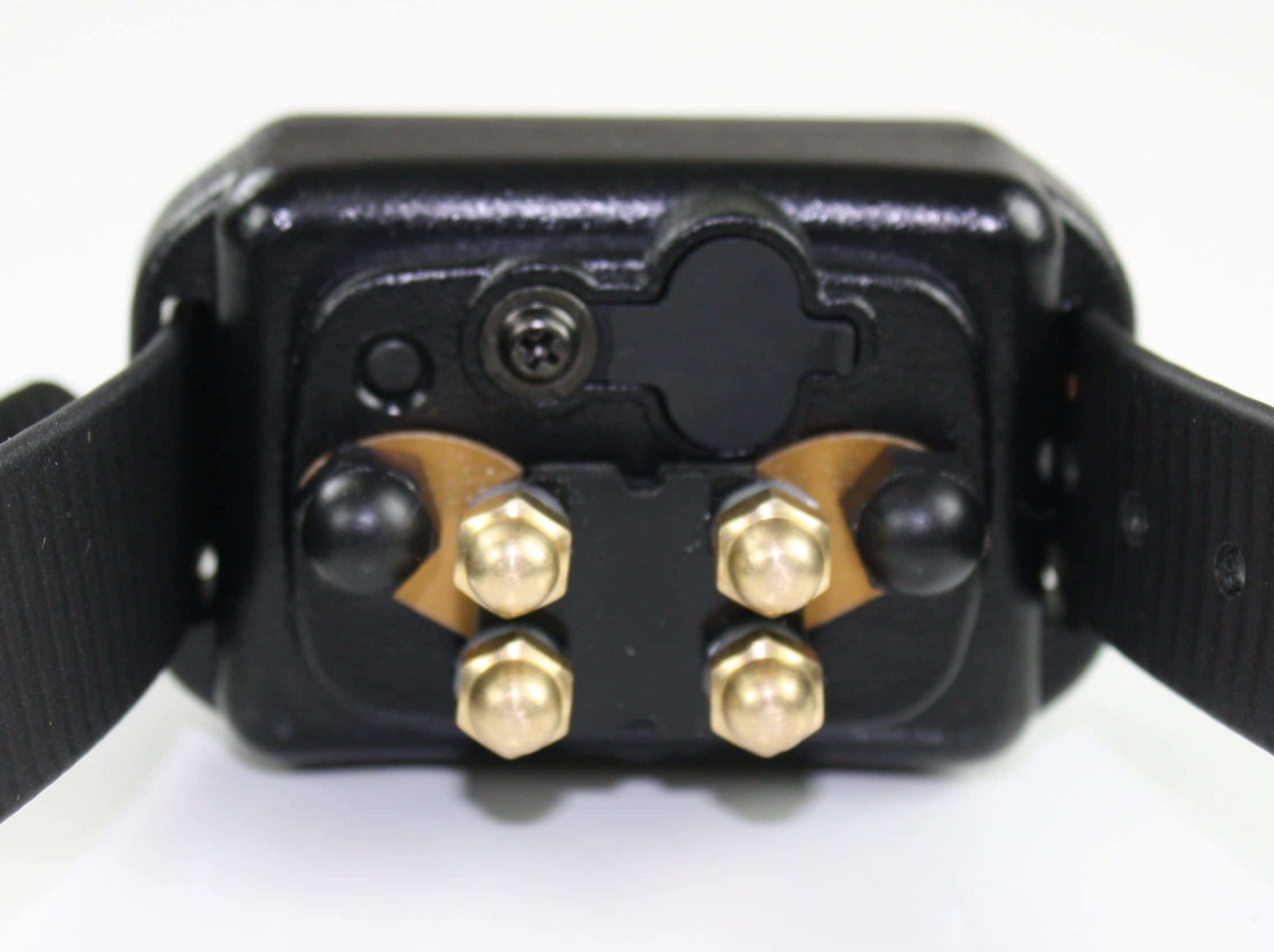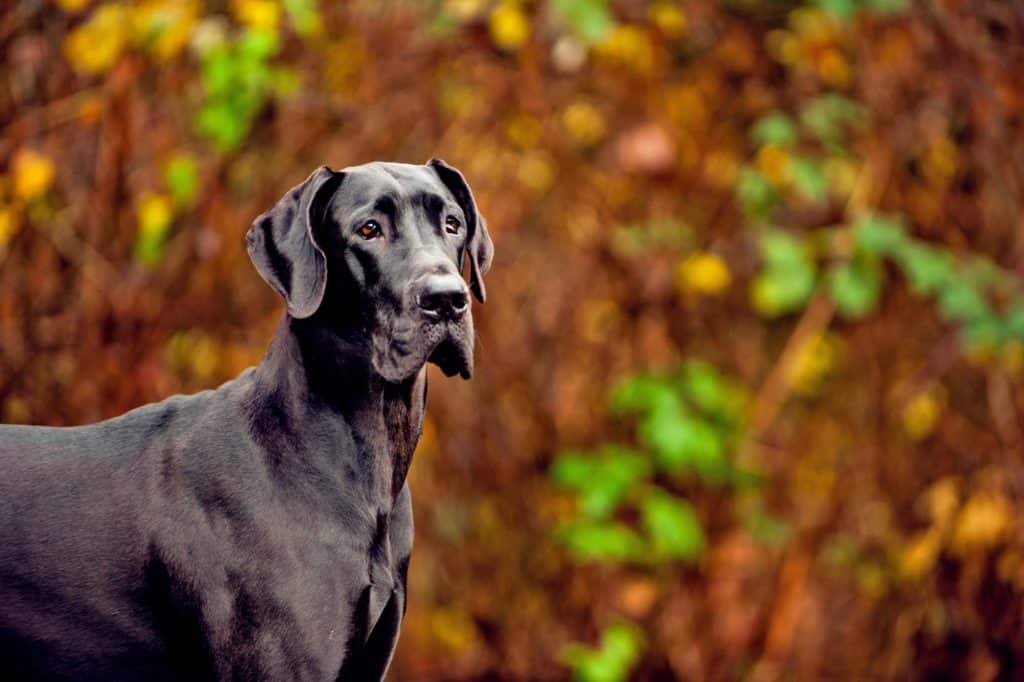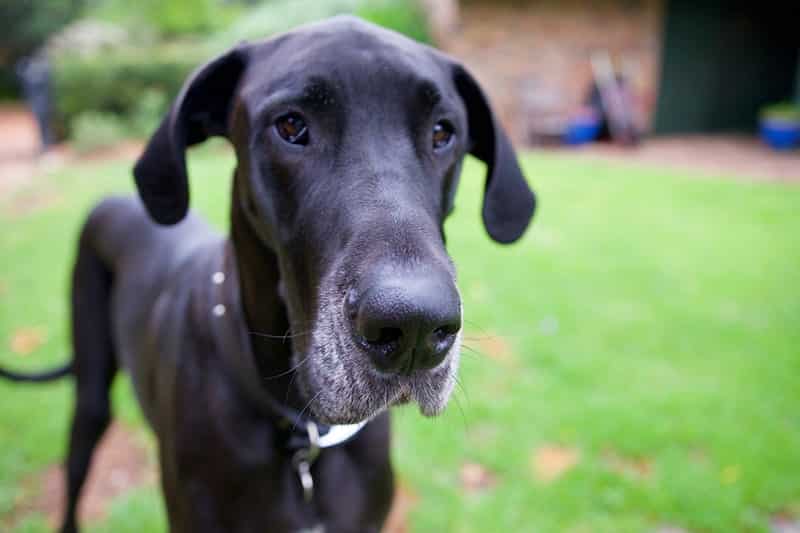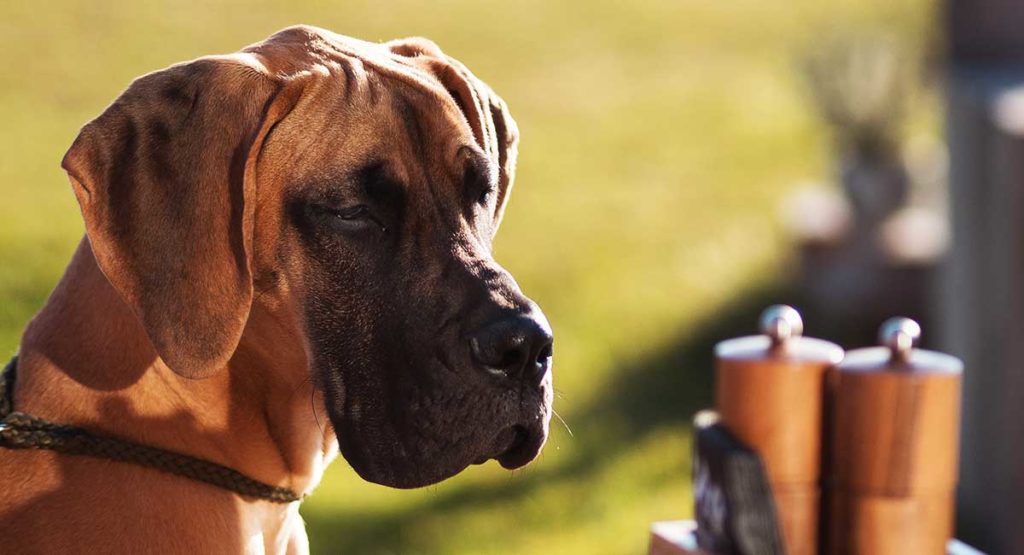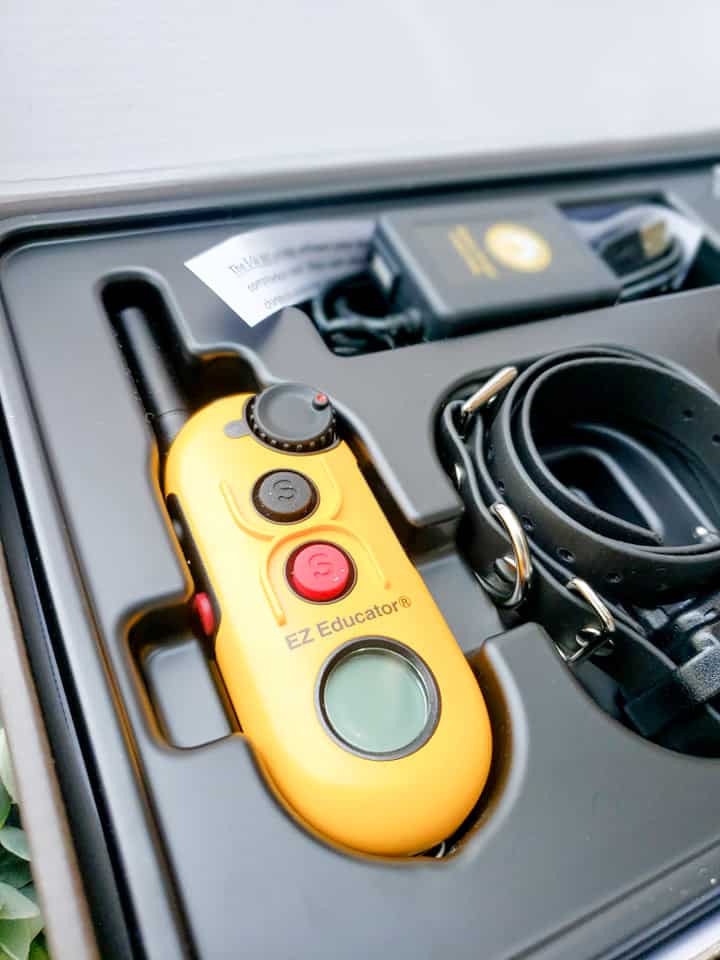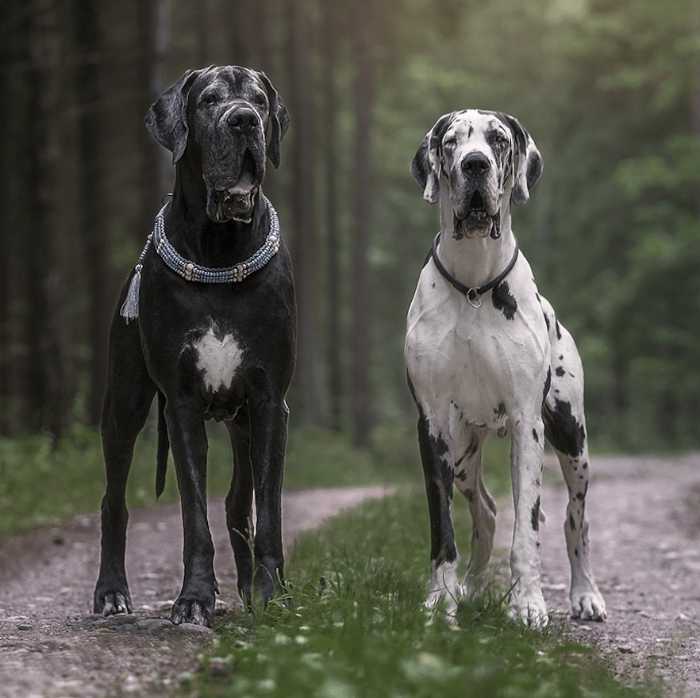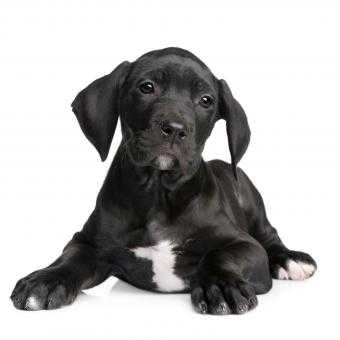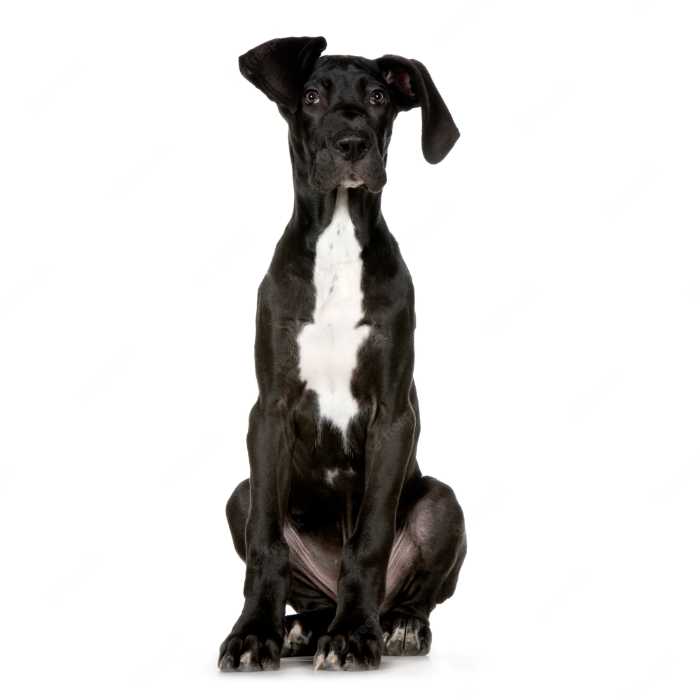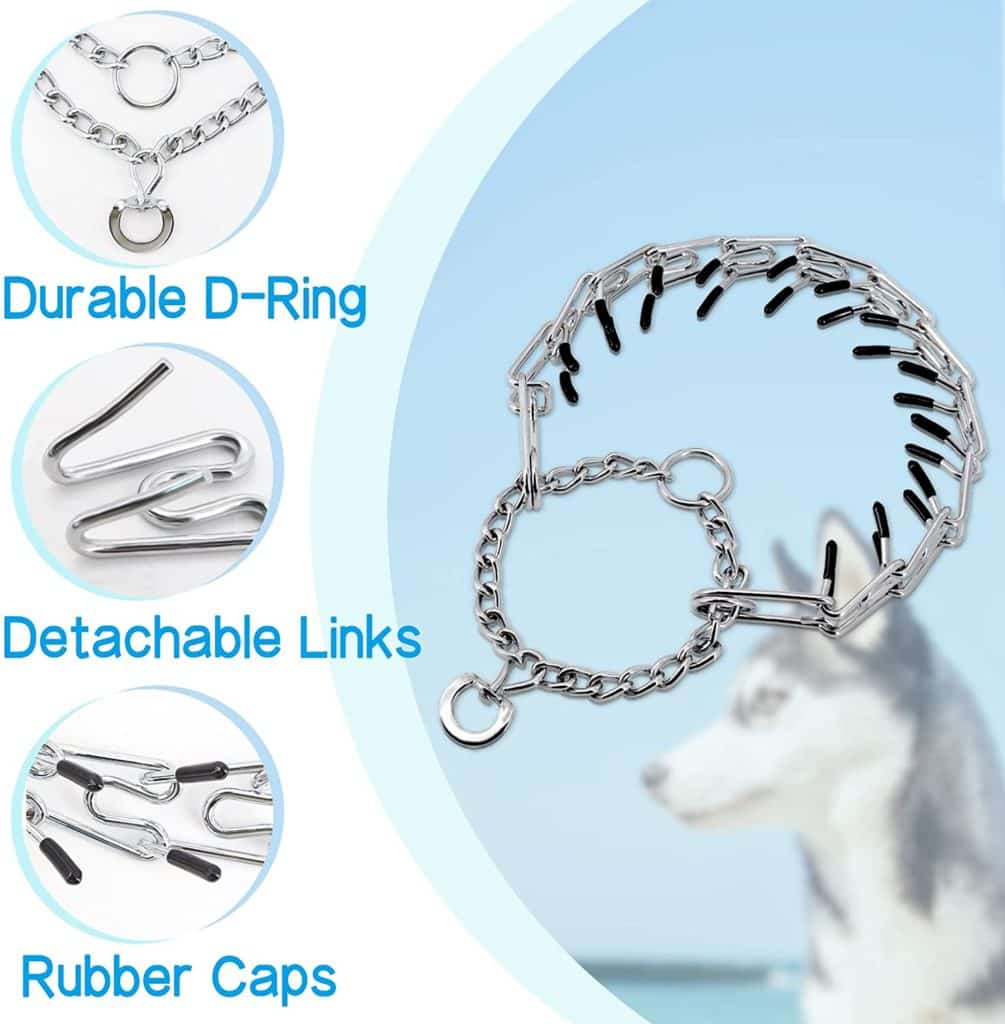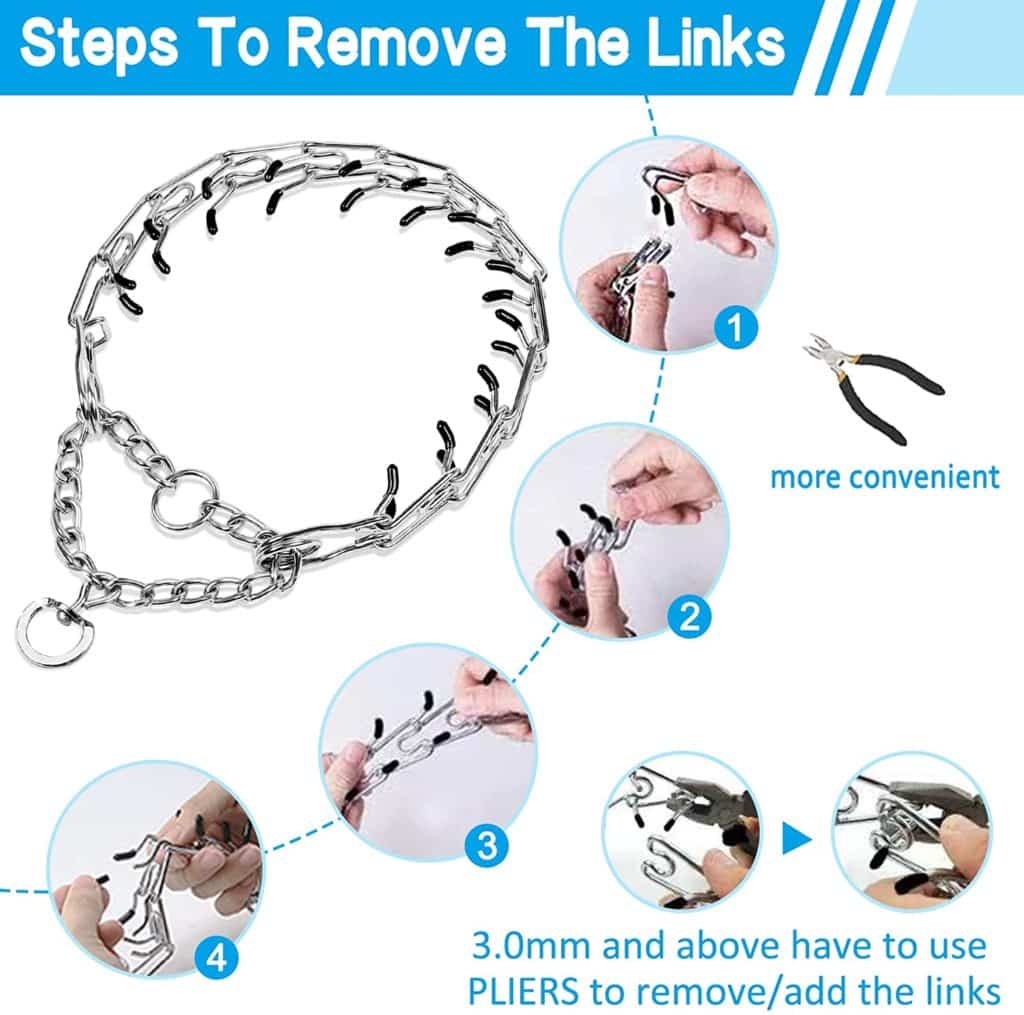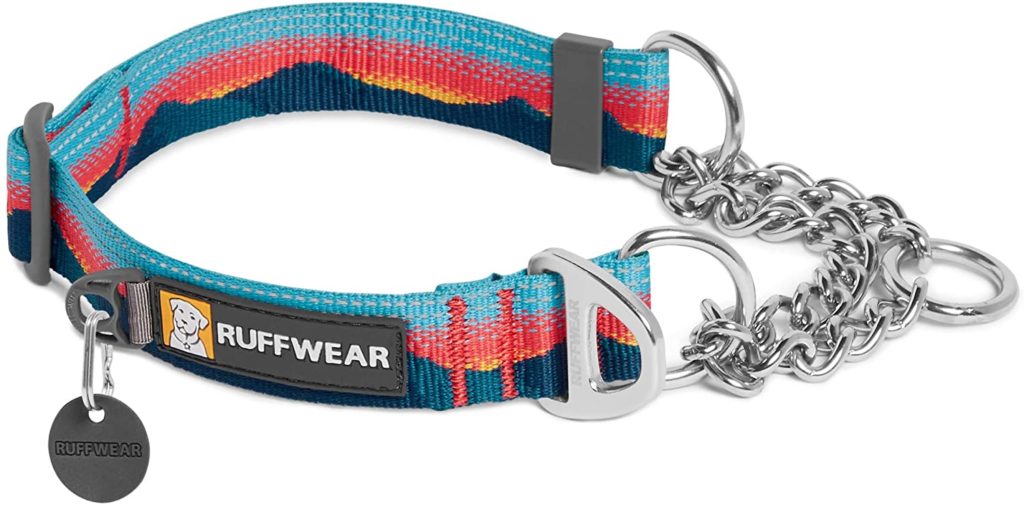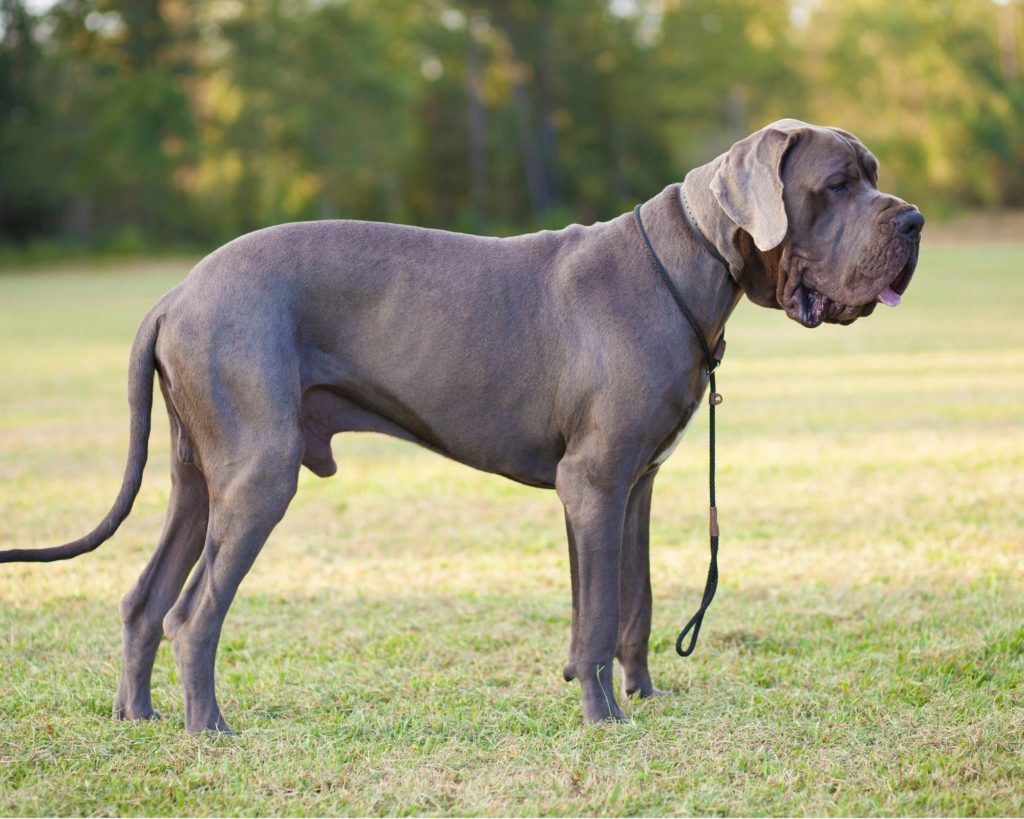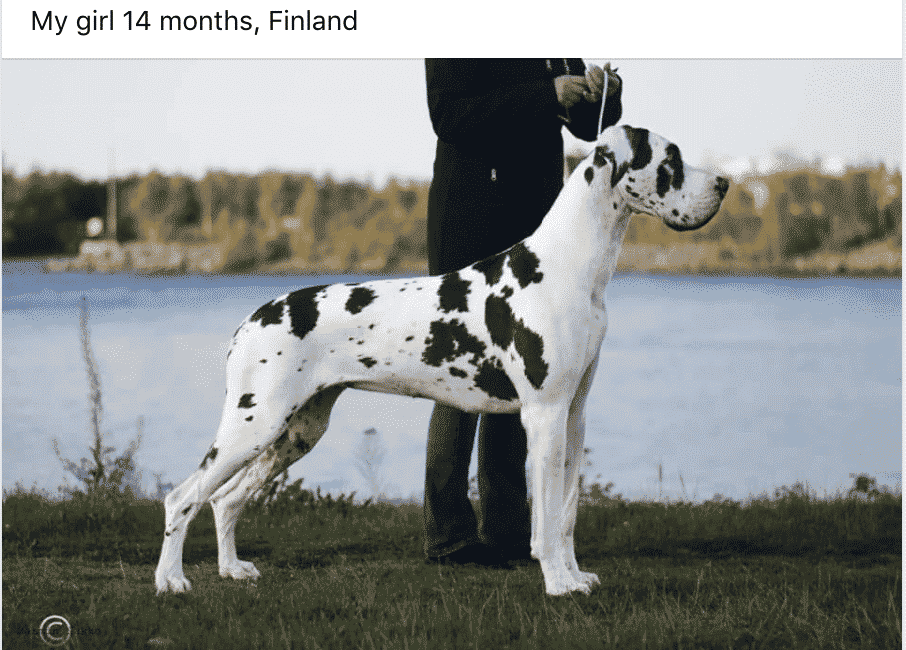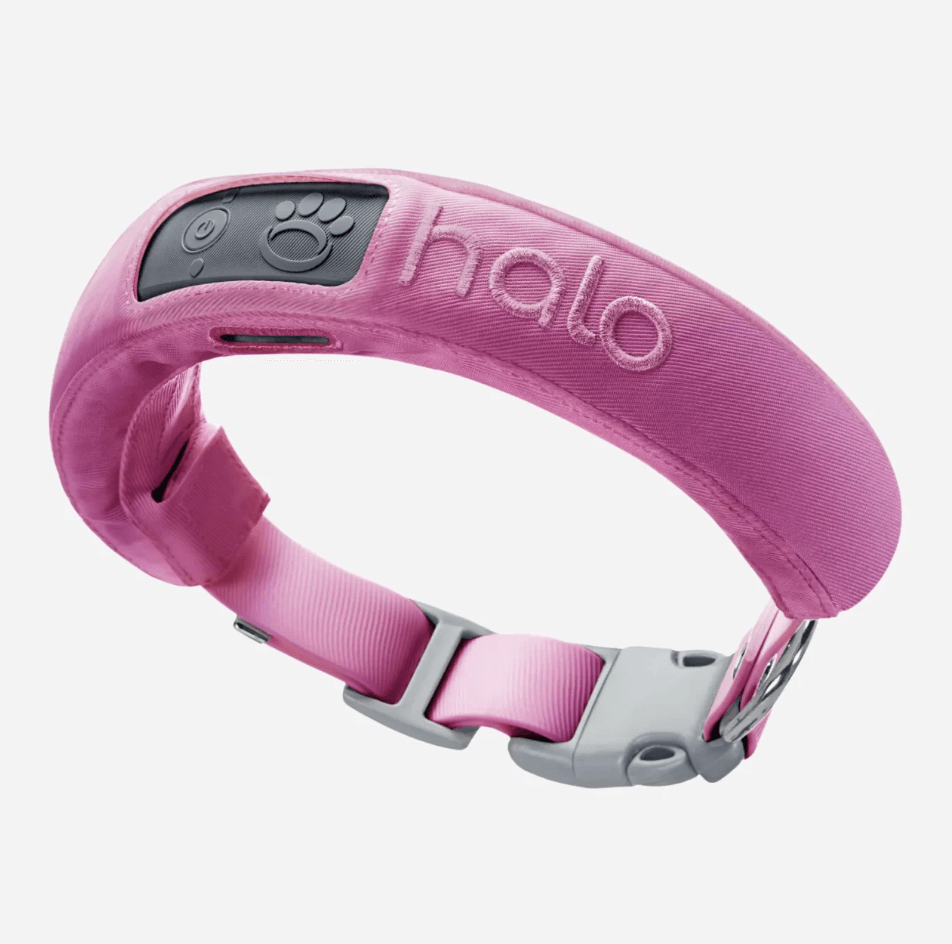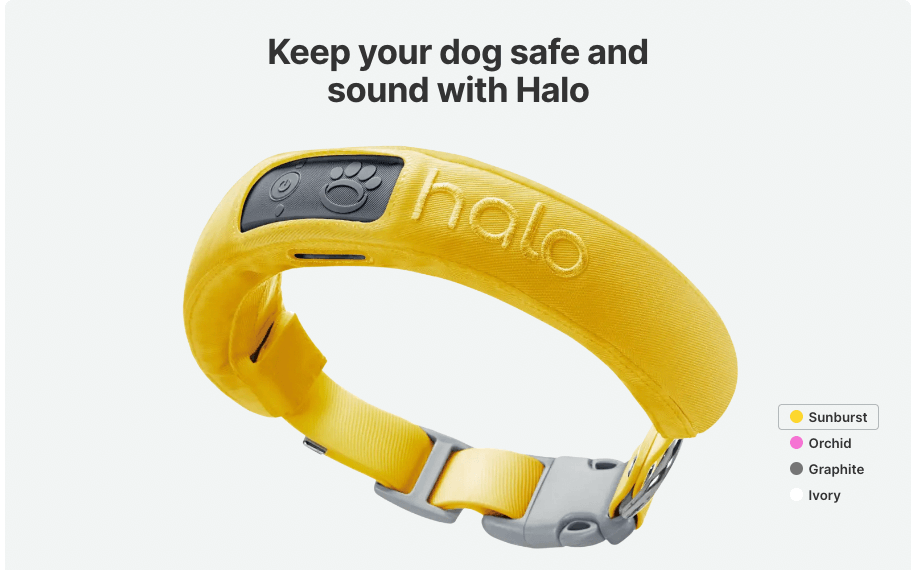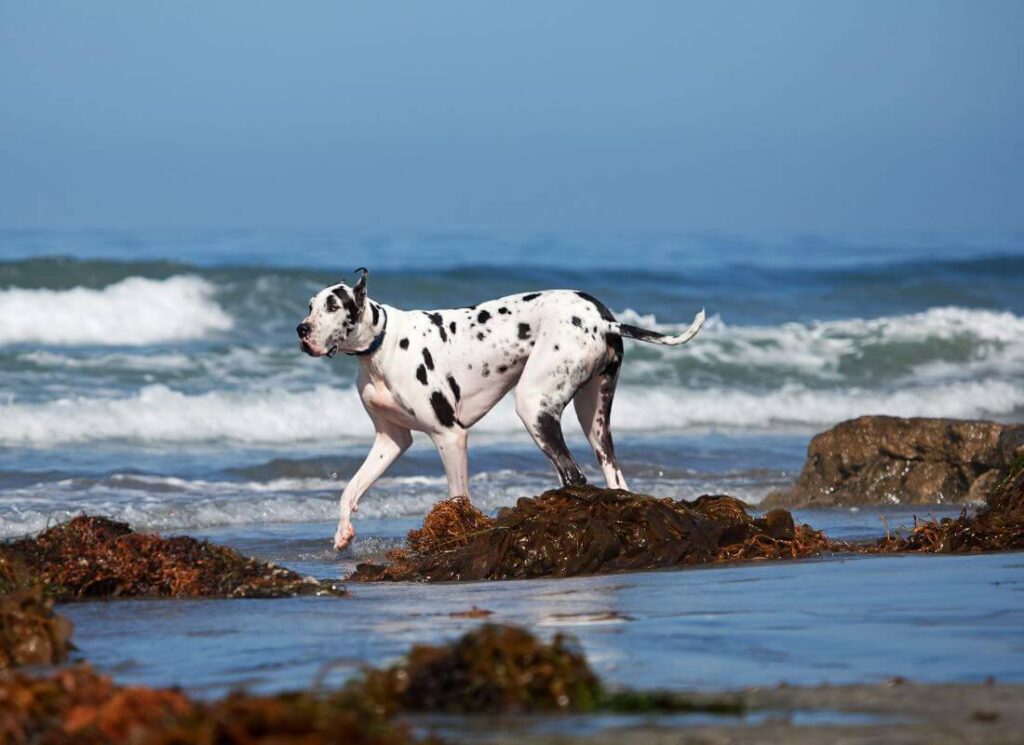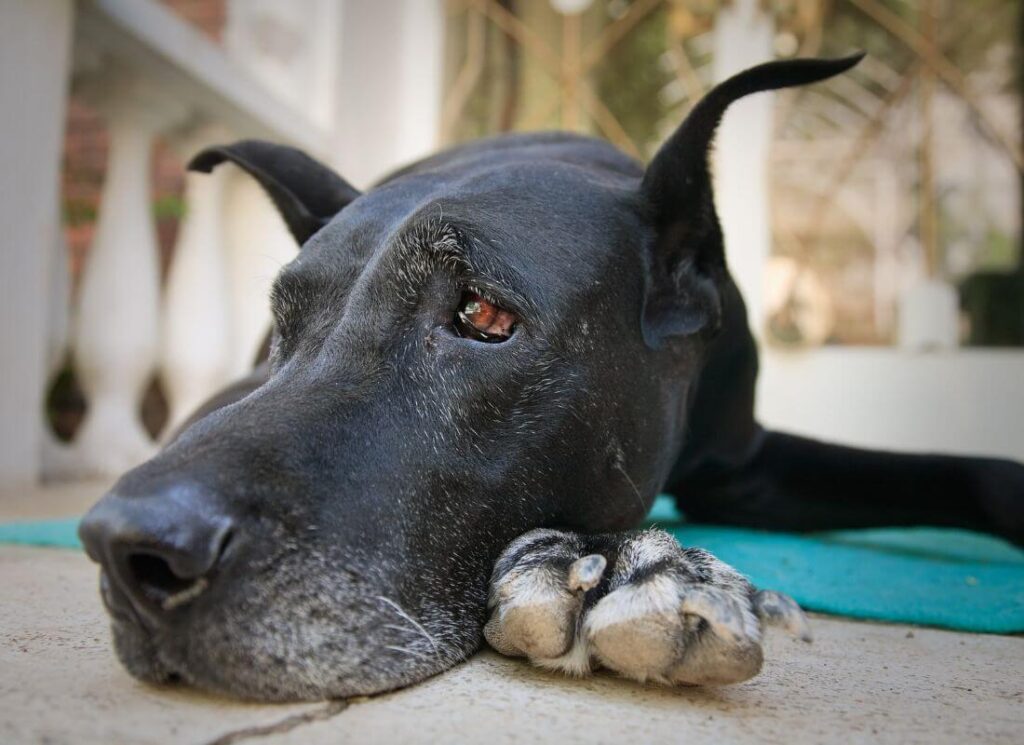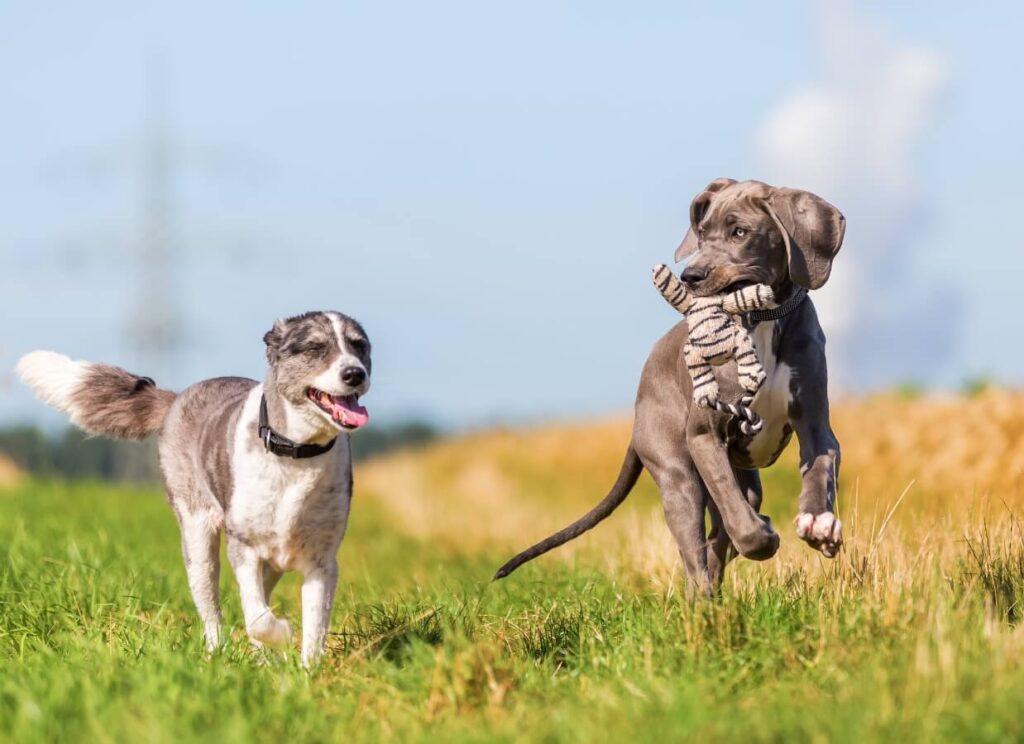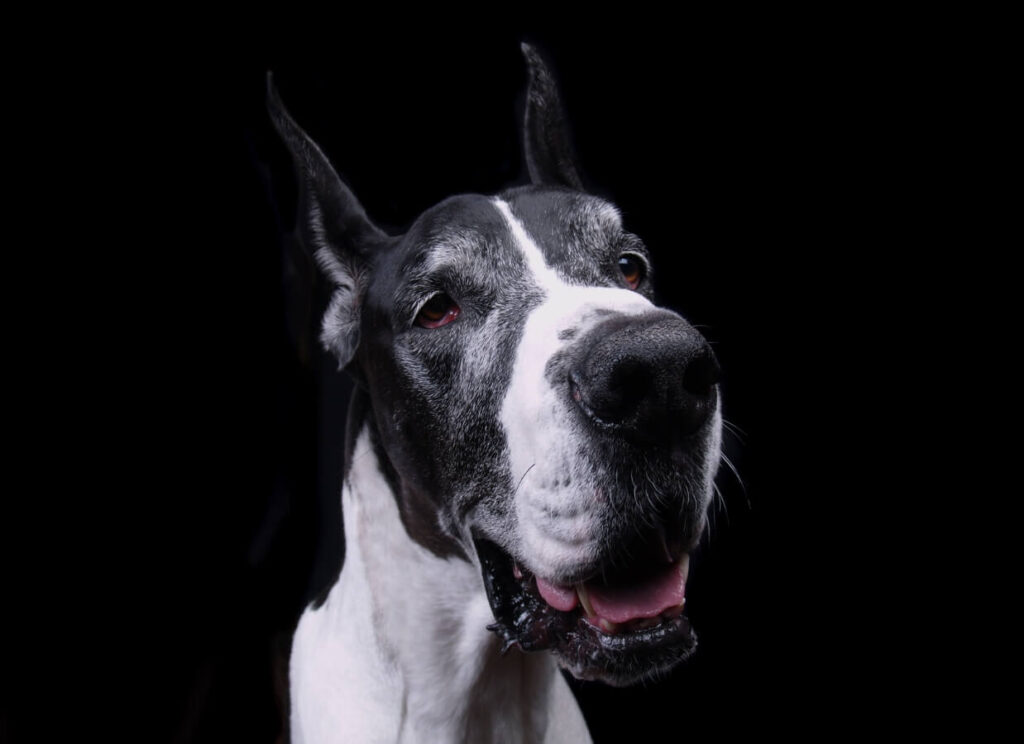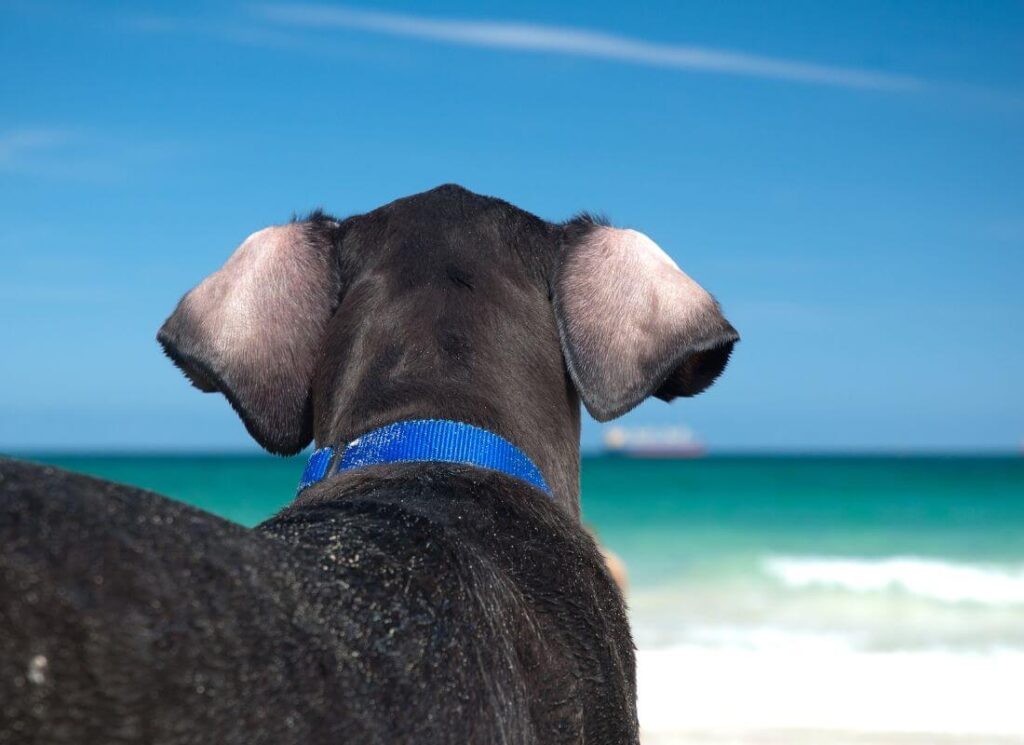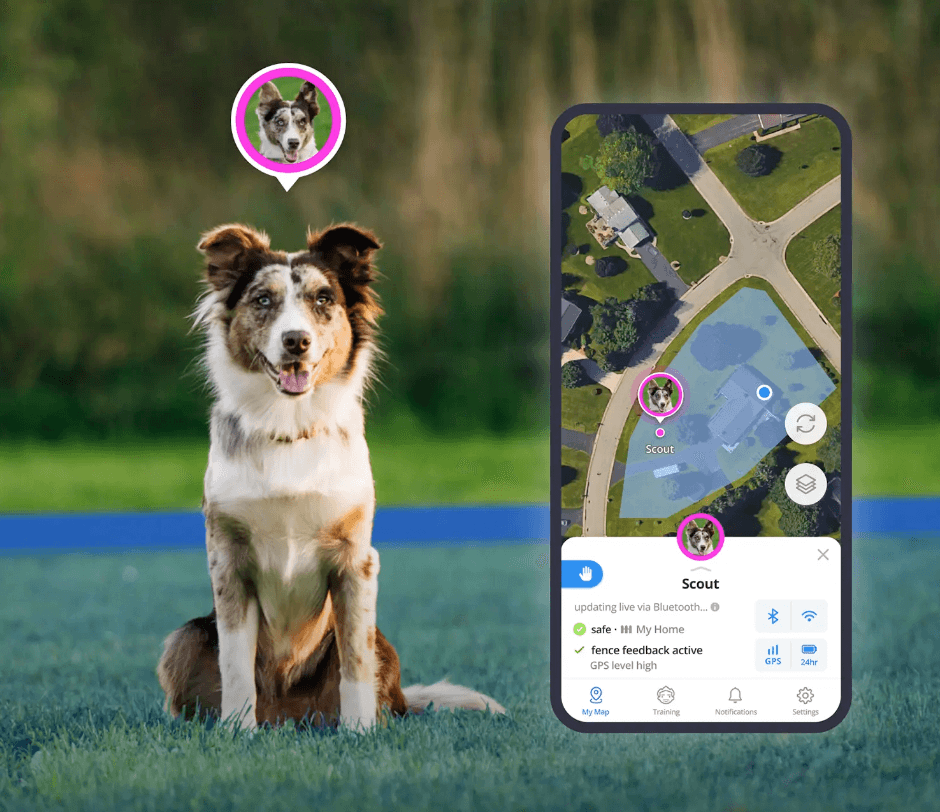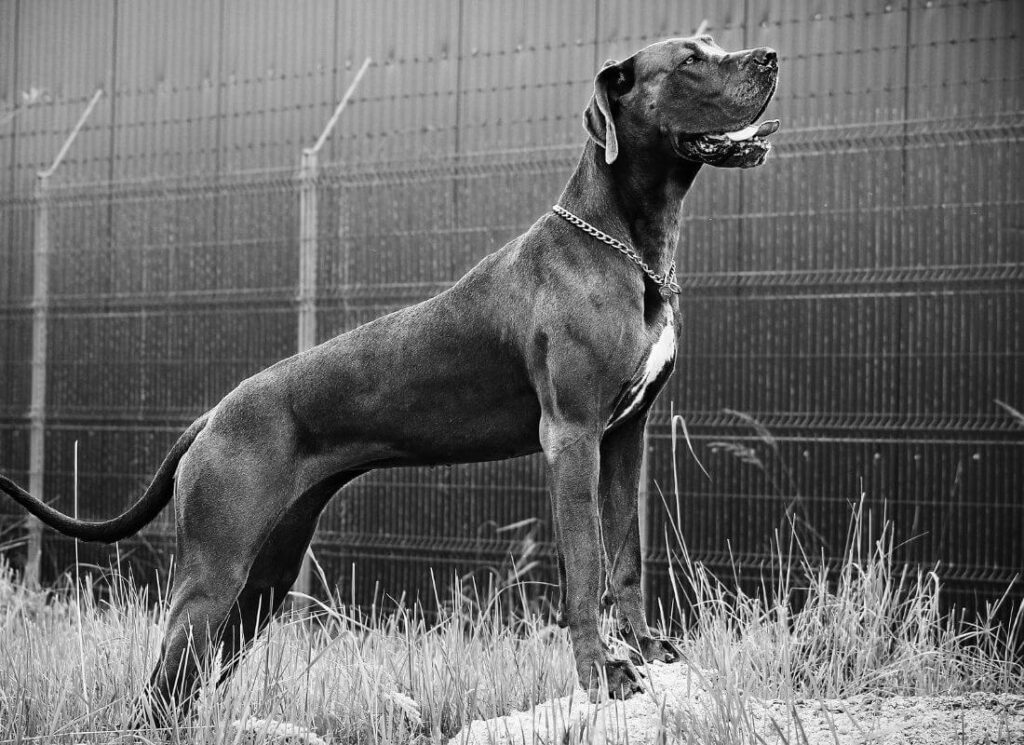Many people view E-Collars (sometimes called ‘shock collars) as an ‘Easy button’ meant to startle and punish a dog that is acting out. This is labeled as ‘aversive’ training and rightfully so.
The belief that this is how all E-Collars are used is unfortunately what gives E-Collars a BAD name, however. It’s important to note that a heavy-handed, aversive, forceful punishment-based approach is the exact opposite of how an E-Collar should be used.
Today we are dispelling some common MYTHS about E-Collars and E-Collar training, so that you can make an informed decision.
MYTH # 1: SHOCK COLLARS AND E-COLLARS ARE THE SAME THING
E-Collars and Shock collars look similar but they are very, very different tools.
You can read our blog post on this topic by clicking HERE.
E-Collars provide a blunt, tactile muscle stimulation that feels like ants marching or a gentle tingle, and 100 levels to choose from.

Shock collars provide a sharp static correction is meant to HURT, with only a few levels to choose from.
If your goal is to hurt, startle, scare or intimidate your dog like they did back in 2001 I suppose a shock collar will work just fine. But shock collars SUCK. They deserve their sketchy reputation.
Proper E-Collars run $180 or MORE. They cannot be compared to or used the same way as cheap garbage shock collars from Amazon.
Read on…
MYTH #2: E-COLLARS MAKE DOGS FEARFUL AND ANXIOUS
Incorrectly used shock collars can absolutely make a dog fearful, anxious or even aggressive.
But so can incorrectly used head harnesses, no-pull harnesses, squirt bottles, crates and even LEASHES!
Every single training tool, including those often labeled as ‘positive’ can be harmful or hurtful to a dog if used incorrectly.
Confusing, punishment based restrictive training methods including intimidation and ‘Alpha/Dominance’ are what lead to fear, anxiety and aggression.
The tactile communication from a properly used E-Collar is more gentle than the tactile communication from a leash, no-pull harness, head collar, or tension on the neck from pulling.
That’s a fact, and one that tends to surprise a lot of people.
MYTH #3: E-COLLARS ARE EXTREMELY AVERSIVE
Let’s compare a popular ‘positive’ dog training tool to a properly used E-Collar.
HEAD COLLAR. Head collars cause many dogs to paw, whine, become frantic or shut down.
It is a rare dog who will accept a head collar without having a problem with it straight out of the gate. Halti and Gentle Leaders rely on tactile pressure, even just by being worn.
Head collars require counter-conditioning and desensitization that often takes days or weeks. The dog will always experience constant pressure from the head collar and may injure themselves if they pull or lunge against it, even just to sniff the ground.
Head collars are considered a ‘friendly’ tool and are used by many ‘positive’ trainers despite the fact that they rely heavily on positive punishment and pressure.
The same thing is true when it comes to front-clip and no-pull harnesses., which also rely on pressure/punishment and obstructing the way a dog moves. These are NOT ‘positive’ or ‘force-free’ tools.
E-COLLAR. E-Collars are introduced at a low level and paired with treats. Dogs do not shut down, become frantic or show signs of fear. Instead, they feel the stimulation and become very excited about it, all within minutes of being fully introduced to the tool! They know that the gentle stim = treats and good things.
This gentle stimulation is a tactile/touch sensation that feels like tiny ants crawling on the skin and can be used to communicate to the dog that redirecting back to the handler and ignoring distractions that cause lunging, barking or pulling is always a good thing.
I don’t know about you, but I’d MUCH rather feel a small occasional tingle (that I know how to respond to and know means good things when I do) than to spend my life restricted from natural movement with a long leash or a bunch of webbing clipped onto my chest or face.
MYTH #4: YOU CAN’T USE AN E-COLLAR AND STILL CLAIM TO BE POSITIVE
I suppose this is true if we are talking about those whom rely on shock, vibrate or high-level stim as an ‘easy button’ corrective tool.
We don’t support such unethical E-Collar use at all.
Slapping an electric collar on a dog and using it straight up as a corrective tool is NOT humane, ethical, positive or appropriate. We agree!
In the last decade, HUGE strides have been made in dog training and the modern E-Collar is not used that way AT ALL.
Basically put, dog trainers, dog owners and rescues who believe that all E-Collar training involves zapping a dog every time it reacts or steps out of line are uneducated about E-Collar training and unwilling to have an open mind about it.
The trainers who are doing E-Collar training correctly include people such as Larry Krohn and Tyler Muto, who use a hugely positive approach (lots of treats, praise, games and confidence building) and teach the E-Collar as a communication tool for off-leash reliability, not a correction tool.
They believe, as we do, that all foundational skills must first be taught without the E-Collar: sit, down, leave it, drop it, wait, come, place, stay and touch.
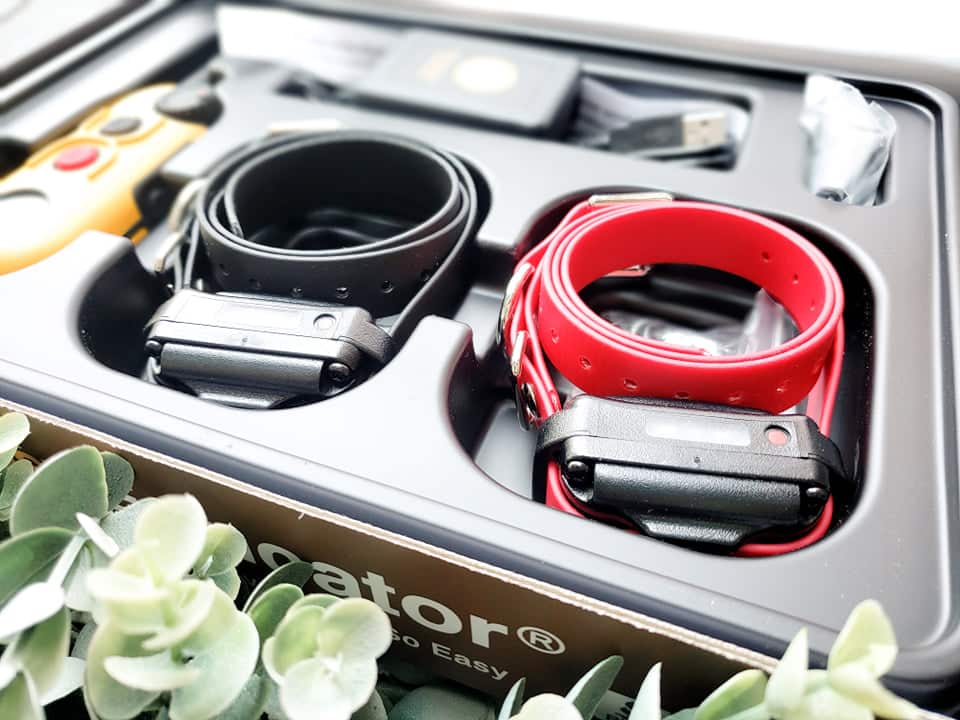
They also believe that it is completely inappropriate to ‘light a dog up‘ for emotional and fear based reactivity, including barking, lunging, aggression and leash aggression.
Run from any trainer who tells you to use the E-Collar to teach basic behaviors and then use it to ‘correct’ them with stim for not complying. That is NOT appropriate E-Collar training and IS the reason why this tool has such a negative reputation.
What does E-Collar training actually look like?
The first step is to condition the dog to the stimulation, by teaching them that it means really, really good things. Remember, this stimulation, for a large majority of dogs (even big, powerful Danes) is less than most humans can feel!
Stim…treat. Stim…treat. Come…treat! Stim, Come….treat! YES!
If you watch the body language of a dog being conditioned to an E-Collar, you see loose posture, wagging tail, eye contact, drive and excitement. After a few repetitions, they feel the stim and become VERY excited and run to the handler.
Not unlike clicker training. Interesting. Unfortunately, MANY unethical trainers and uneducated dog owners completely skip the conditioning step and see the tool as a correction device for frustrating behaviors, and that’s unfortunate.
When done correctly, the E-Collar becomes the leash and in many ways, is less aversive, less restrictive, and less harmful than a leash (especially if the dog pulls or lunges). In the first session with the E-Collar, most dogs learn quickly that stim = follow/come/be with me and they LOVE IT.
No leash pressure, no tension, no stress on the neck, chest or shoulders. The dog is free to move naturally and is simply asked, through a gentle stimulation and treats, to be responsive to the handler. They are not being corrected or punished, either.
It’s interesting how that is considered ‘forceful’ and damaging. We believe it’s simply ignorance and a lack of education, or people who prefer to outright judge, have a closed mind and are unwilling to learn about this.
MYTH #5: E-COLLARS HURT THE DOG
Modern E-Collars (view them here) have 100 levels of stimulation that can be increased incrementally.
Most dogs respond to stimulation levels of 10 or less.
For perspective, it’s important to understand that most humans cannot even feel the stimulation until it’s been set at a level of 12 or higher.
A stimulation level of 6 or 7 is almost imperceptible. The sensation is so gentle that it is completely non-aversive. If it were hurting the dog, the dog being trained would show signs of stress. If a dog shows signs of stress while being trained, something is not being done correctly.
At worst, the stimulation from an E-Collar may be seen as mildly annoying to the dog. Which, a harness, leash, long line, head collar or keeping a door shut until the dog sits calmly may produce the same feelings.
The dog knows (through conditioning) how to quickly get rid of the tingling sensation. They are in control and can easily get rid of the ‘annoying’ thing. They also know that getting rid of it means treats and praise!
That head collar or long leash though? There is nothing they can do about those. They stay, whether the dog likes it or not.
MYTH #6 – E-COLLARS ARE UNNECESSARY
There is this idea out there that because a recall can be taught without an E-Collar, it should be and that there is no reason to add a tool to the mix.
But the truth is, when done correctly, E-Collar trained dogs are enthusiastic, happy, calm and often offered more freedom and autonomy than many other dogs.
How anybody can see that and say those dogs are abused is beyond us.
The E-Collar is an invisible leash. It gives an extra step of security on top an already outstanding, positively trained recall.
So is it ‘necessary’? No. Is it extremely helpful and beneficial when it comes to safety and giving a dog additional freedom? YES.
If a positive-only trained recall is blown off, there is no backup.
The E-Collar is a great safety device. Positive-trained dogs would benefit from knowing and understand E-Collar stimulation for this reason. To go without is like riding without a seatbelt.
The E-Collar provides a gentle, crystal clear communication to the dog from a distance, which ultimately allows for much more freedom. The tactile sensation can be used to communicate to a dog that it needs to come back, walk away from somebody else on the path, or has gone too far away. It can be used in an emergency, if the dog decides to chase a squirrel into traffic.
A higher level of stimulation is less harmful in that last situation than if the dog were to hit the end of a long leash and be jammed up by the neck as a result.
This is especially true for dogs that need to move naturally and explore in order to feel enriched.
‘Shocking’ and punishing a dog for blowing off a recall is NOT HOW IT WORKS. Applying a gentle tactile stimulation that they know how to respond to (come back and it goes away) IS how it works.
Interestingly enough, if you condition a dog correctly to the E-Collar, you rarely if ever have to use it. It’s not this ‘abusive’ tool of force that some people like to say it is.
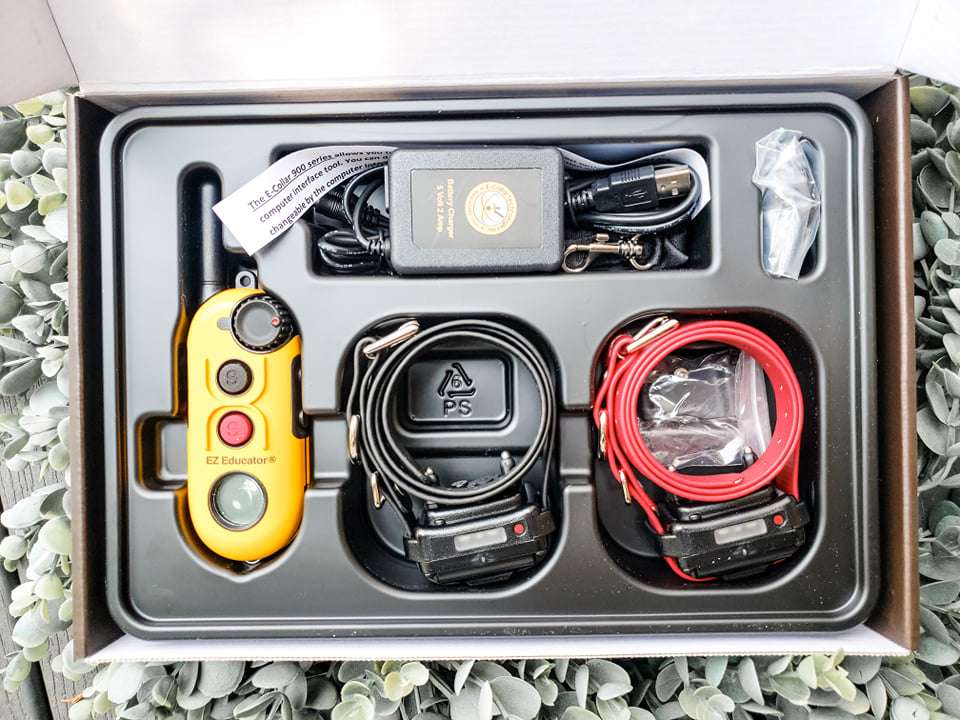
MYTH #7 – STUDIES SHOW E-COLLARS CAUSE STRESS
Not a single one of those studies, that we’ve found, studied dogs where the dog was conditioned to the E-Collar first and trained with a lot of positive reinforcement.
Shock and startle training will absolutely cause stress. Cheap shock collars CAUSE STRESS. Stimming dogs for messing up, especially when they don’t know what’s being asked of them, will CAUSE STRESS.
Many of those studies lump shock collars and E-Collars together as the same tool; which they aren’t. The studies are not peer-reviewed. They are often biased and always extremely flawed.
Yet, people continue to cite them…even trainers who claim to be ‘science-based’. There is nothing science-based about citing studies that were not correctly done.
Watch this video of Larry Krohn conditioning a dog to the E-Collar. Please send us an email and tell us where this dog is stressed, anxious or being forced.
MYTH #8: VIBRATE IS BETTER THAN ‘SHOCK’
Most shock collars and E-Collars come with a ‘vibrate’ function.
Many dog owners believe that ‘vibrate’ is a gentle way to correct their dog, and will proudly state that they use that and would ‘never use shock unless necessary’.
Remember, we believe that shock collars are absolute garbage. So yeah, shocking a dog is not ok. That’s not E-Collar training and shock and startle is not the most effective training, either.
Newsflash, though…vibrate mode is super-duper aversive to most dogs.
Does it succeed in punishing a dog for a behavior? Yup. Does it redirect dogs? Sure. Does it make owners feel ‘good’ about using it? Unfortunately, yes.
Take your vibration collar and put it in the palm of your hand to experience it. Have somebody else randomly hit the vibrate button when you aren’t paying attention. It’s really annoying and startling.
Take a PROPER E-Collar (like the Educator series) and put it on a level 7 (average stim where most dogs enthusiastically work). Feel it on your body somewhere. Heck, bump it up to a 14 and try again.
Tell me which YOU would prefer.
Folks, vibration mode is bad.
READY TO GET STARTED?
We rely heavily on positive reinforcement AND we use E-Collars to give our dogs security in their off-leash adventures.
Hello Danes is an authorized distributor of E-Collar Technologies products, and we are here to help you train your Great Dane in a positive, ethical way. Imagine off-leash freedom and more.
Let’s do this! Shop our collection of high-quality E-Collars for Great Danes here, and use code ECOLLARMAGIC for $10 off. Our E-Collars ship directly from the manufacturer.


